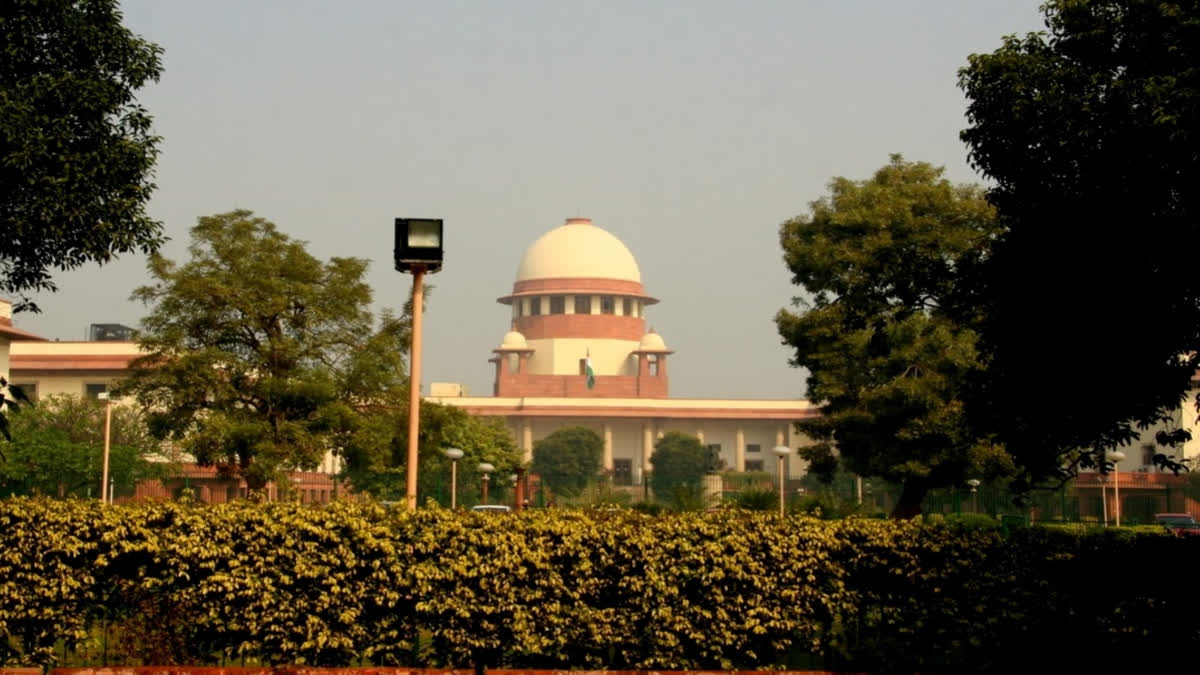New Delhi:The Centre on Friday vehemently opposed before the Supreme Court a proposal to form a committee of former apex court judges to oversee the implementation of measures against stubble burning, a key contributor to Delhi-NCR's air pollution, saying that the government and the Commission for Air Quality Management (CAQM) were taking adequate measures and “no judicial application of mind is required”.
The suggestion was made by senior advocate and amicus curiae Aparajita Singh before a bench comprising Justices Abhay S Oka and Augustine George Masih, which was hearing a case related to the rising pollution in Delhi-NCR. Singh sought to leverage the expertise of judges as part of the proposed fact-finding committee and emphasized that they had previously dealt with air pollution and stubble-burning issues.
A bench led by former apex court judge Justice Madan B Lokur had heard pleas related to pollution and the role of stubble burning as a contributing factor in the past.
Today, Singh said: “I had suggested on the last occasion that let it go to CAQM but CAQM data itself is not inspiring today. What I suggested on the last occasion was four judges’ who had vigorously monitored these matters. Lordships may make a committee of these judges, they know the issue. They have monitored the issue. Let them hear every individual, the farmers, and the government”. Additional solicitor general Aishwarya Bhati, representing the Centre, shot back saying, “We are strongly opposing (this committee)”.
Senior advocate Gopal Sankaranarayanan, representing a party in the matter, said “We are strongly supporting it…we have seen after the CAQM came in…”. Bhati said, “We are here, the statutory framework is here, all state governments are here. There is no judicial application of mind required. Your Lordships are monitoring (the air pollution issue). Each of the agencies is here….We are acting on the suggestions”.
Sankaranarayanan said the resistance shows what the problem is. Bhati said we are respectfully submitting, “Please do not create any more tiers”. Singh said it is not a tier but a fact-finding committee, which will report to the court.
Bhati said, “If your lordships find the intent is wrong then…we are here. Answering your lordships on everything”. Sankaranarayanan said who are these people on the commission and what is their experience in air pollution?
Bhati said, “This is the committee which has been tasked with making the protocol for the burnt area (stubble burning). They are aware of the situation…this is the sub-committee made by ISRO for creating that protocol. We are doing the best, which our capacity permits and our wisdom permits…we are mending our ways, we are progressing in the direction which the court deems appropriate”. Justice Oka said one thing you must accept is the delay on your part in implementing anti-air pollution measures, GRAP-3 and GRAP-4. Bhati said it has been amended and, pointing at the affidavit, added that the bench had said in anticipation it should happen. Citing the government's affidavit, Bhati said “As soon as the threshold is crossed it will be done”.
Bhati asserted the Centre and the Air Quality Commission were taking adequate measures and that adding another oversight layer would be counterproductive. In 2020, a bench headed by the then CJI Justice S A Bobde set up a panel headed by Justice Lokur to deal with the issues relating to stubble burning. The order was later recalled after the Commission for Air Quality Management (CAQM) came into existence.
During the hearing, Sankaranarayanan highlighted changes in the timing of stubble burning, coupled with seasonal wind patterns, which has worsened Delhi's air quality. Singh flagged discrepancies in data reported by the CAQM and other sources regarding burnt areas in Punjab and Haryana.
The apex court was informed that the burnt area in Punjab has increased to 19.1 lakh hectares from 15.1 lakh hectares in 2021, a 24% rise, and Haryana's burnt area rose from 3.5 lakh hectares in 2021 to 8.3 lakh hectares in 2023. It was argued before the court that this contrasts with CAQM data, which claims a reduction in farm fires in Haryana.
The ASG defended the CAQM's methodology, arguing that reliance on unverified sensors would undermine the process. The bench observed that while satellites could detect farm fires, burnt areas showed their exact extent. Last week, the apex court directed the Centre and the CAQM to procure farm fire data using geostationary satellites, as opposed to NASA's polar-orbiting satellites, to ensure real-time monitoring.
Read More
- GRAP-4 Anti-Air Pollution Measures To Continue Till Nov 24, SC To Review It On Monday
- ‘Final Opportunity’, SC Seeks Centre’s Response On Defaced Currency In J&K
